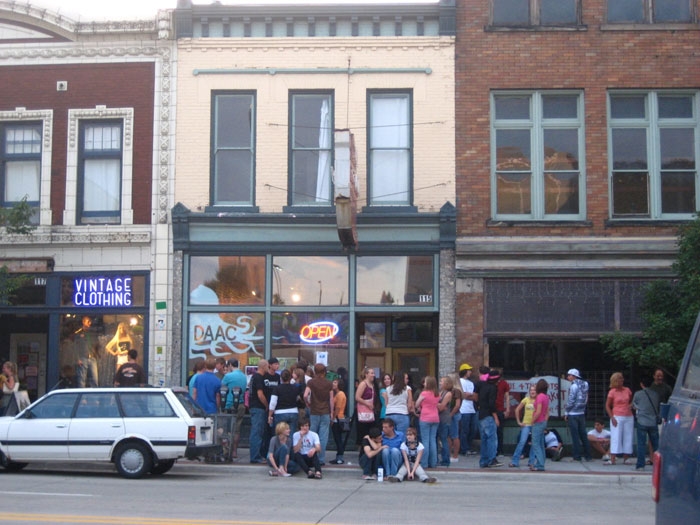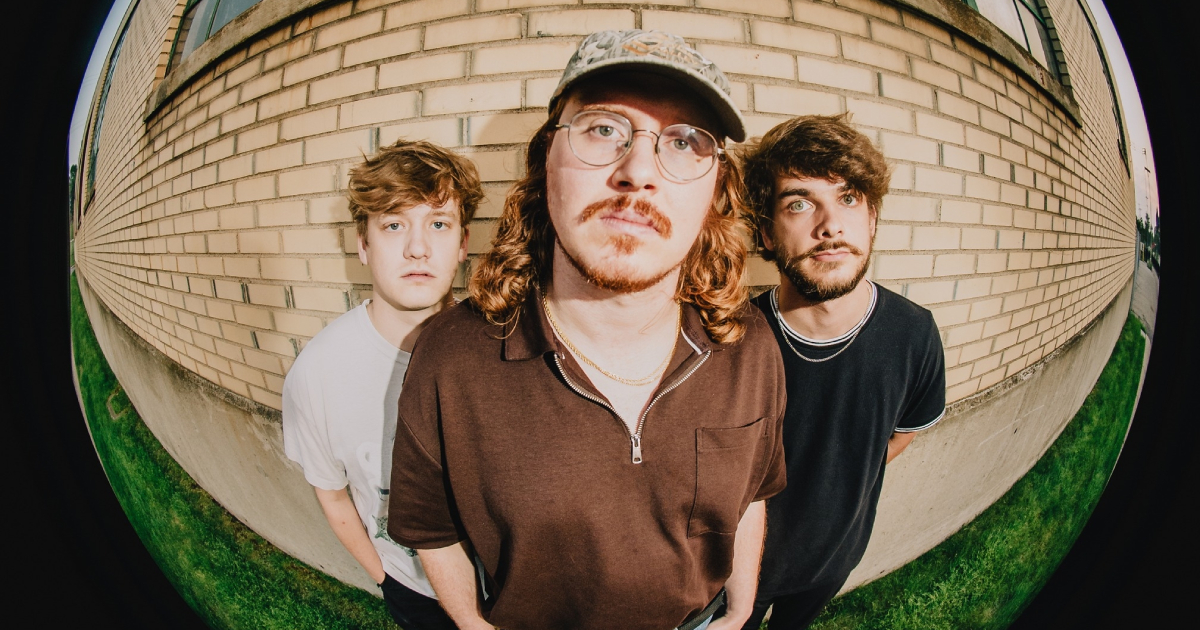When the Grand Rapids-based Division Avenue Arts Collective lost its home at 115 South Division two years ago, the organization that for a decade helped give voice to countless local artists and musicians faced an uncertain future.
It could no longer offer the local creative community a permanent, all-ages venue — regardless of how unglamorous the former space was — where they could push the boundaries of art and music. But while it’s been a bumpy ride, the DAAC has managed to avoid fading into obscurity.
After a series of community events and a continued outpouring of support, the reinvigorated organization has emerged with a plan to become a legitimate, sustainable nonprofit and to find a new location to serve generations of artists to come.
“We want to do it right and stoke the fire and let everyone know we’re still here,” said John Hanson, a local musician and one of six DAAC board members. “We’re kind of making this shift from being an all-DIY space to becoming a more stable nonprofit art organization.”
The board members believe that stability will come when the DAAC owns its own building and is not left to the whims of new landlords.
From its founding in 2003 until 2013, the DAAC operated from the blink-and-you’ll-miss-it brick building on Division Street, easily identified by the large baby-blue octopus in the window.
While the structure itself was simple — nothing much more than a blank canvas of brick walls and wood floors — the site served as a haven for creative minds of all ages.
Despite the building’s beat-up mic stands, multiple battle wounds that included a hole in the wood floor — feasibly produced by an overzealous stomping boot, and graffiti-tagged and stickered bathrooms, the DAAC thrived for the sake of art and music. It embraced the independent spirit.
“It was just a space run by artists who allowed for creative expression of all sorts,” Hanson said. “It wasn’t a place run by old people. It wasn’t a clean, pristine place. It was a pretty raw environment that really fostered a raw energy and raw communication.
“It was the place where anyone could hang out, any band could play and it was all run by artists. There was no wacko bureaucracy.”
FINDING FOOTING
Then, unexpectedly, the DAAC was put out on the street when its landlord sold the property in July 2013 and the new owner wanted to take the facility in a different direction.
“We had to be out by the end of the month,” said Mike Wolf, a DAAC board member and an exhibitions assistant at Kendall College of Art and Design. “That really only gave us 10 days to move out. The new owner wanted us out to make way for an ‘arts and culinary corridor,’ so he thought it made sense to kick out the arts collective that had been there for 10 years. It’s been used as storage space for two years now. To put it nicely, we were all upset.”
Since then, the DAAC has managed to live on without a permanent venue, but the board remains committed to finding a new space for the organization — ideally one that it will own so it doesn’t face a similar situation down the road.
“As we move forward, we want to look into certain protections that would ensure a permanent space or just have a more stable foundation where that situation can’t happen again,” Hanson said. “That’s kind of the end goal: Buy a building – that way we don’t have to worry about rent every month, just taxes. … We don’t have a secured place yet, but it’s in the works.”
After the organization was forced out of its previous location, it raised about $20,000 in a crowdfunding campaign on RocketHub, but backers know they’ll need more funding to buy a building outright.
“We’ve got a little money in the bank but haven’t found the right space to acquire yet,” Hanson said. “It’s not enough money to buy a building.”
CREATING COMMUNITY
Prior to being ousted from 115 S. Division, the DAAC building served as a second home to a diverse batch of local musicians, artists and creative types from 2003-2013, Wolf said. The venue instituted few limitations, playing host to everything from hardcore punk shows and performance-art pieces to film screenings and zine readings.
“We let groups and individuals use the space however they wanted, within reason,” Wolf said. “The space played host to all-ages music shows, workshops, poetry readings, puppet shows, visual art exhibitions, lectures and panel discussions. We’d host VHS, book and vinyl swaps. We were flying under the radar. We had a dance hall permit so we could have people in the space. But we weren’t a nonprofit like some people think. We were just a scrappy, community space.”
A chief component of the DAAC has always been its all-ages accessibility, he said.
“As an all-ages venue, the majority of the participants fell into the 14-24 age range because it was one of the few places for people under 21 to see and play shows that brought in a lot of energy and created a strong community,” Wolf said.
While there’s been a downturn in DAAC activity since its 2013 exiling, its spirit is alive and growing as the collective continues to host events at various locations, said fellow board member Hanson.
“The DAAC has managed to survive in this community,” Hanson said. “It started because the space was available but the idea is what attracted people. As fractured as we’ve become without a space, we’re still working towards this goal because we believe in it.”
COMING HOME
Luckily for the DAAC, it’s not having to do all the fundraising for its new home on its own. In April, La Dispute, a band that cut its teeth at the venue and played a few legendary gigs at the original location, played a fundraiser for the DAAC at the Covenant Fine Arts Center.
But beyond raising funds, the DAAC organizers have been buoyed by an outpouring of community support in recent months. Kendall College hosted the “DAAC @ The Fed” event that opened June 19 to a reception of more than 300 people and offered a series of events, workshops and public discussions with local artists.
The DAAC offered musicians a chance to record a song for a new mixtape to be released as part of the event. A pop-up studio recorded music for anyone who secured a slot.
For the first time in three years, the DAAC also brought back its Sunday Soup GR program and raised $125 for a mini-grant that it awarded to the Grand Rapids Feminist Film Festival. The organization also got involved with supporting the Grand Rapids Zine Fest.
The DAAC has also sponsored events such as the Lamp Light Music Festival, held pop-up shows and established partnerships around Grands Rapids, he said.
According to Wolf, workspaces were utilized, bands performed, zines were devoured and minds met. The DAAC felt reinvigorated.
“Now that everyone has been supportive and we’ve managed to raise this money, we feel there is a responsibility to see this through to last not only another 10 years, but another 20, 40, 50 years,” Wolf said. “It’s an important resource for the city to have, so we’re trying to be patient about it, rather than rushing in to a space and figuring out we can’t stay there. We want to be in a good situation and in a neighborhood that makes sense.”
Along those lines, the organization is taking a hard look at what its next phase of life should be.
“The closing of the space, the Fed gallery opening and new-found support are the seeds of a new chapter in the DAAC’s life,” Hanson said.
“The question is: How do we make this sustainable? In our business plan and moving forward, we’re working on integrating more engagement programming, like workshops and creating a space that’s not just sold as a music venue but can be used for all types of learning and engagement practices.”
“Right now, we’re taking our job seriously and looking at our business plan. It’s just not decisions that are easy to make. … We still want to be productive and engage in the community.”





